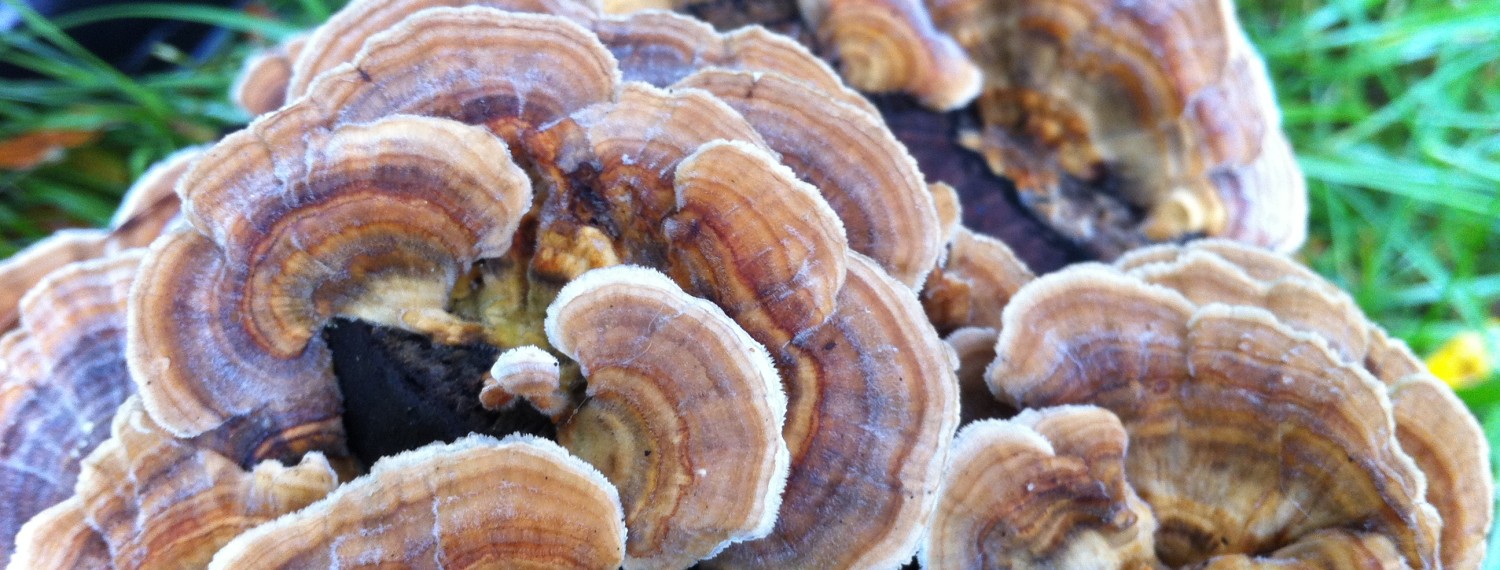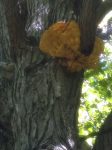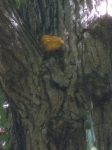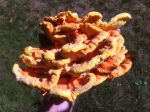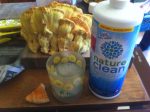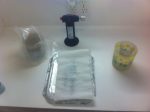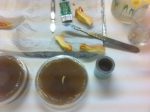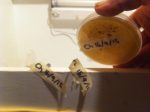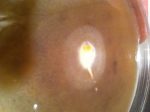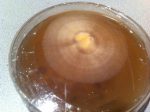Finding wild mushrooms, then cloning and domesticating them is one of the most fun and challenging mycological exercises for me. I have been successful cloning wild Turkey Tail, as well as King Oysters from the store, today I’m trying to tame a wild Chicken of the Woods. This one appears every year about this time. It seems to be higher up the tree each year. This year it was too high to get with the ladder so I brought an arborists’ pole saw.
A fresh part of the growing edge was put into Hydrogen Peroxide. (H2O2) to clean the outside, and then transferred to the prepped glove box. Because I’m cloning to nutrifed agar I must use sterile techniques. Gloves and Tyvek sleeves misted with isopropyl alcohol keep your germs out of the clean space. The blade is flame sterilized (careful with the alcohol around). The mushroom is torn open to prevent the blade transferring contaminants from the surface. A small piece is deftly transferred to the plate. The plate is sealed with ParaFilm or a homemade equivalent. Plates are labeled and incubated. After you are finished clonong, seal the petri dishes. Instead of ParaFilm I make my own sealing tape with short widths cut from a roll of cellophane.
Five days later, after returning from the Cain Foray (where we ate the Chicken, along with many other fungal delights cooked up by Chefs Dwayne and Garrett) to find a pretty good results. All of the plates show growth in all directions (if perhaps a bit thin), and there doesn’t seem to be any contamination.
Stay tuned for more…
- A big Chicken of the Woods (Laetiporus sulphureus) on an Oak tree.
- A small one just below. Both out of reach. So I brought a pole saw. and a faithful companion with a basket to catch them.
- Laetiporus sulphureus is also known as sulphur shelf, That’s the name you tell your friends when you don’t want them to know it’s a choice edible.
- Submerge a young tender sample of the growing edge of the mushroom in Hydrogen Peroxide to kill some of the bacterial and spores on the outside. This brand from the hardware store is stronger the drugstore brands.
- Glove box set up for cloning. Agar plates (with antibiotic if possible, this is plain) and cello-sealing tape, butane torch, scapel, and CotW sample in H2O2. Wash the air with bleach water.
- After the clone seal the petri dishes. Instead of ParaFilm I make my own sealing tape with short widths cut from a roll of cellophane.
- Label the plates on the bottom as they will be stored upside down to prevent condensation. The agar appears blotchy because this batch contains a little sawdust.
- It doesn’t look like much, but four days later there is growth and no contamination. But we are not out of the woods yet…
- Day 7, growth is strong and consistant. Reaching the edge of the plate it becomes more vulnerable to contamination. At this time they are moved to the fridge until I make some fresh liquid culture (LC) medium and grain jars to expand the culture.
